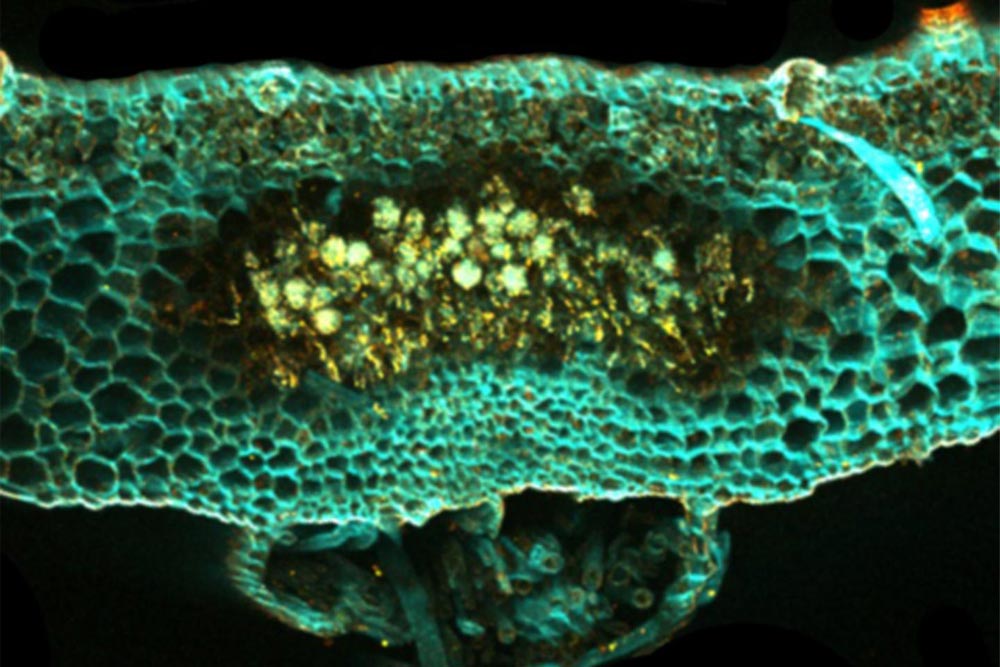

Mycorrhizal and plant symbiosis.
Credit: Pierre-Marc Delaux
These relationships, known as symbioses, allow plants to access additional nutrients. The most intimate among them are intracellular symbioses that result in the accommodation of microbes inside plant cells.
A study published in Nature Plants, led by scientists from the John Innes Centre in the UK and the University of Toulouse/CNRS in France, describes the discovery of a common genetic basis for all these symbioses.
It is hypothesised that the colonization of land by plants was made possible through a type of symbiosis that plants form with a group of fungi called mycorrhizal fungi.
Even today 80% of plants we find on land can form this mycorrhizal symbiosis. Plants have also evolved the ability to engage in intracellular symbiosis with a large diversity of other microbes.
Over the past two decades, studies on mycorrhizal symbiosis and another type of symbiosis, formed by legumes such as peas and beans with soil bacteria, have allowed the identification of a dozen plant genes that are required for the recognition of beneficial microbes and their accommodation inside plant cells. By contrast, other types of intracellular symbioses have been poorly studied.
To address this, the team compared the genomes of nearly 400 plant species to understand what is unique to those that can form intracellular symbioses. Surprisingly, they discovered that three genes are shared exclusively by plants forming intracellular symbiosis and lost in plants unable to form this type of beneficial relationship.
“Our study demonstrates that diverse types of intracellular symbioses that plants form with different symbiotic partners are built on top of a conserved genetic program.” said Dr Guru Radhakrishnan, lead author of the study and a BBSRC Discovery Fellow at the John Innes Centre.
The research, led by Dr Radhakrishnan in the UK and Dr Pierre-Marc Delaux in France, was conducted as part of the Engineering Nitrogen Symbiosis for Africa (ENSA) project sponsored by the Bill & Melinda Gates foundation.
ENSA is an international collaboration aiming at transferring naturally occurring symbioses to cereal crops to limit the use of chemical fertilizers and to improve yield in small-holder farms of sub-Saharan Africa where access to these fertilizers is limited.
“By demonstrating that different plant symbioses share a common genetic basis, our ambitious goal has become more realistic,” says Dr Radhakrishnan.
An ancestral signaling pathway is conserved in plant lineages forming intracellular symbioses is in Nature Plants












